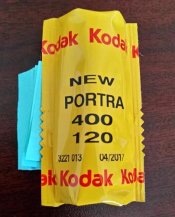Chadinko
Member
So it sat around for 5 months outside the Kodak sealed foil package. I don't remember any complaints from folks who immediately processed their film- were there any?
Right! As I understand this backing-paper problem I consider that the most important time/factor is "the time since the film is opened and during its use and its final storage" (wherever it may be - temperature/place) but well isolated to light (at any time).
It's true that both the time before use and the time after use & before development, could be another time/factor however in this case slightly more imperceptible and certainly not causative but as the usual "chemical fog" (any film suffers from its manufacture) that can increase the marking sensation problem only.
I still fail to see what the problem is with letting it sit for five months in a dry, temperature-controlled environment before processing. I have a shelf in my office where I set these things after I shoot them until I can get to processing them; it's behind any direct light (sunlight or artificial light) as well. My cameras all wind the film tightly on the spool and with some minor exceptions I manage to keep the film light-tight on the spool when sealing and storing it as well. And it doesn't really make sense to think that a light leak anywhere might cause this imprinting rather than appearing as a standard light leak, with the traditional streaking and fogging, because outside of the imprinting the negatives are beautiful. Combine that with the fact that this shelf where I park film has held film for much longer than that which has developed perfectly.
I'm neither a scientist nor a chemist, but it seems to me that if five months outside the foil packet after exposure causes film to react with backing paper and cause it to freak out like this, then expiration dates are completely irrelevant anyway. I'd be interested to know -- and I'm sure there's someone who can tell me -- what the difference is between the chemical composition of the film's emulsion prior to exposure and after exposure, but before processing.











